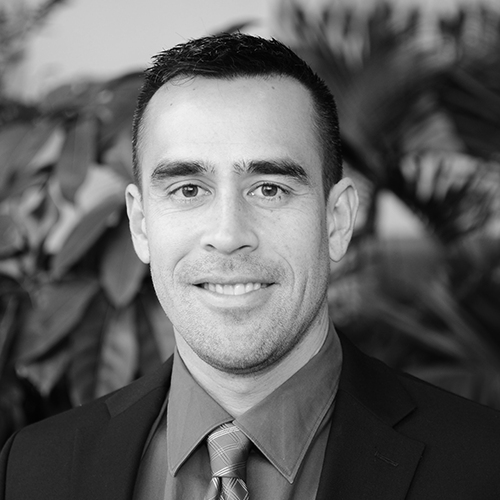When Rich Konrath first developed the idea for the program now called “Affirmative Recovery” at CNH Industrial, he was looking for a way to turn legal teams from cost centers into something else—ideally, an asset to business teams and compliance offices. Just because the mission was accomplished, however, did not mean it was complete.
Konrath, CNH Industrial’s vice president and general counsel, is determined to catalyze a year’s worth of positive momentum generated by the program into a bigger and broader impact for the company. This momentum has resulted in both qualitative and quantitative enhancements to the initiative that are beginning to make themselves known around the company. The impact will be felt in CNH programs far outside of the Affirmative Recovery initiative.
On the qualitative side, the expansion of the initiative is measurable in two equally significant ways. The first expansion is geographical. What was once a domestic operation—or North American operation at best—is gaining traction in other parts of the world.
“It’s really nice that we’ve been able to garner interest in other regions with our other legal teams and groups,” Konrath says. “We’re starting to expand into Europe and Latin America. There are cultural differences, so there’s a cultural adjustment in getting a mindset for Affirmative Recovery and implementing it as a program, but it has really gained legs.”
Much of the reason for the new global reach of the program can be traced to the other qualitatively measurable expansion in Affirmative Recovery: it’s catching on with CNH Industrial’s business leaders. That validation can be attributed to both Konrath’s early hustle in getting the program going and its results since.
“We were very active in—for want of a better word—‘selling’ the program to business teams early on because we really needed them engaged to fully realize the benefits from this,” he says.
“What we’re seeing now is a lot more business leader engagement. Now, I’m actually having business leaders come to me and say, ‘Rich, I think I might have one for the Affirmative Recovery effort, will you take a look?’”
Even better, in the week before speaking to Modern Counsel, Konrath’s CEO approached him to ask about some of the programs underway.
The expansion of the program is also significant for a few immeasurable reasons. Konrath and his team have expanded the scope of Affirmative Recovery’s focus from traditional areas such as insurance, supplier recovery, and IT licensing into more innovative areas, such as class action recovery.
“For example, if a class action lawsuit has been filed against a vendor for price fixing and we believe we are entitled to recovery, we will aggressively pursue it,” he says. “We are getting a lot more active in reviewing potential class action recoveries.”
There’s also a second-order effect to the effort that’s important without being part of a bottom line—the message sent by the idea that Konrath and his team will proactively seek redress from business partners who aren’t holding up their end of the bargain.
“We value our business partners and we expect them to work fairly and ethically with us toward common goals,” he says. “But when that doesn’t happen, when we feel aggrieved, we’re going to take some action. It may save cost and grief down the road.”
The quantitative enhancements speak to why Konrath’s CEO is interested. The program has increased its recoveries roughly 20 percent in the short time since Konrath first discussed it with Modern Counsel in 2015, jumping from roughly $25 million in recoveries up to about $30 million today. Konrath sees bigger things yet in the future, with upcoming litigation cases that could net the program an additional $15 million in 2017 alone. That would represent an almost 100 percent increase in the space of a few years for Affirmative Recovery.
“When you’ve got that top leader engagement, you know that it’s starting to become really embedded in the organization and part of the cultural DNA,” Konrath says.
The proactive thinking that sparked Affirmative Recovery is also seeping into other areas of Konrath’s responsibilities, specifically compliance. He frames his approach to compliance around its financial and competitive impact.
Konrath cites the massive fines and penalties paid by companies that find themselves on the wrong side of a Department of Justice decision as just the tip of the iceberg, as legal fees and legacy compliance monitor costs dwarf the penalties that make the news. With the total cost of an investigation that ends poorly representing an amount of money that becomes material to a company’s future, he sees a good reason to take a comprehensive approach to compliance.
CNH Industrial’s compliance program includes an independently operating chief compliance officer at the top, separate, regionally-based compliance teams driving compliance programs in their respective regions, compliance committees for each region, and a global compliance committee. Online and in-person training helps ensure the robustness of the program on the ground. So does the simple practice of keeping open lines of communication from the compliance department to employees through short online video vignettes, trainings, and other messaging. The competitive advantage in a strong compliance program isn’t lost on the company.
“If you’re in an industry that’s being looked at by the government and you have a solid compliance program in place that you can demonstrate, the Department of Justice is likely to recognize that and make a pretty big deal of the program you have in place,” Konrath says. “If your competitors don’t have a program like yours, you have a pretty big advantage.”
Equally important is the advantage with regard to the company’s reputation.
“If you’ve got a farmer out there who’s making a decision on who to go with in terms of buying products, I think reputation with regards to compliance and ethical behavior makes a big impact,” Konrath says. “If we’re in the news for good and the competitor is in the news for bad, I think that can have a big customer impact.”

